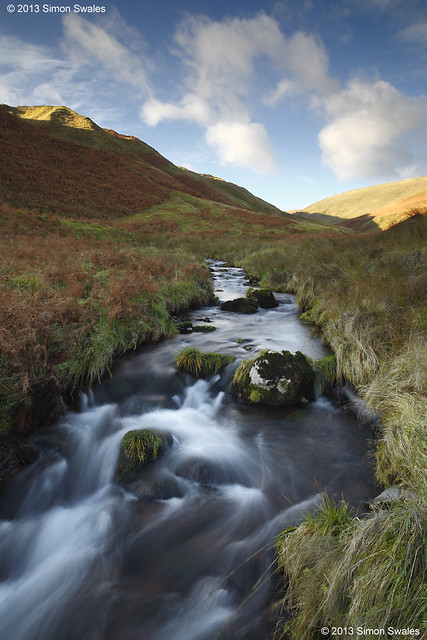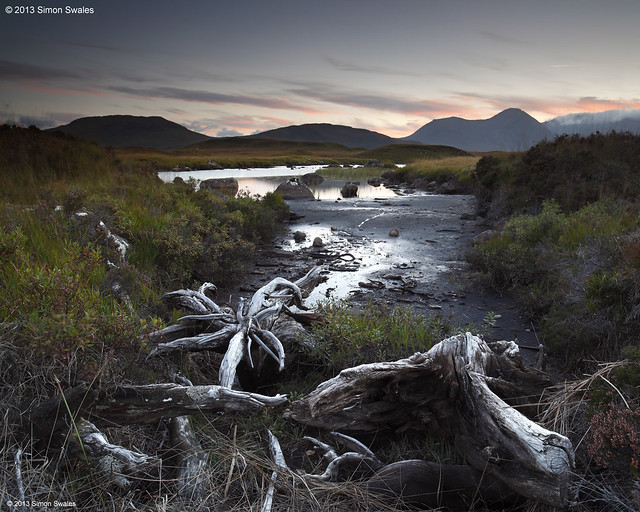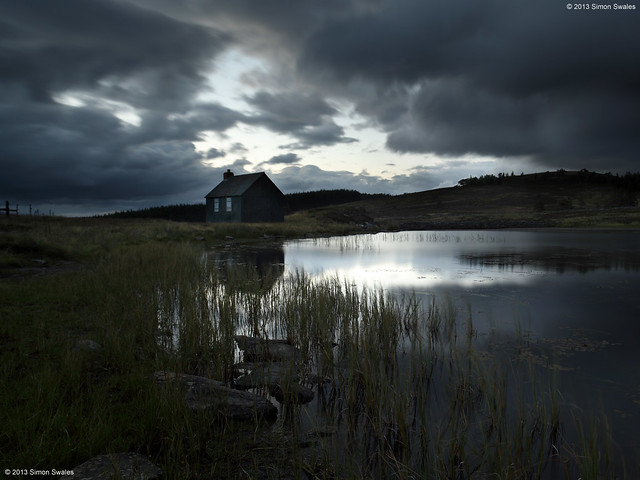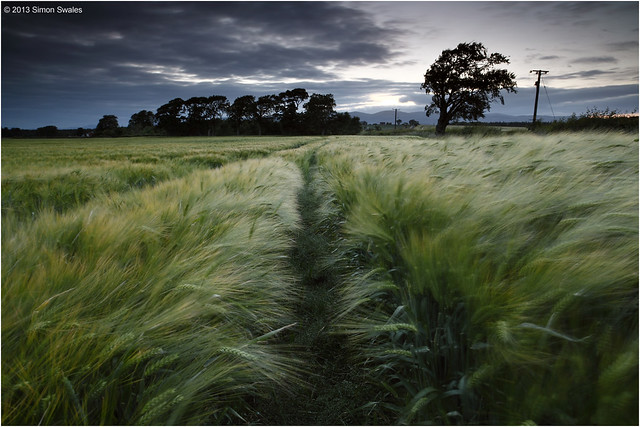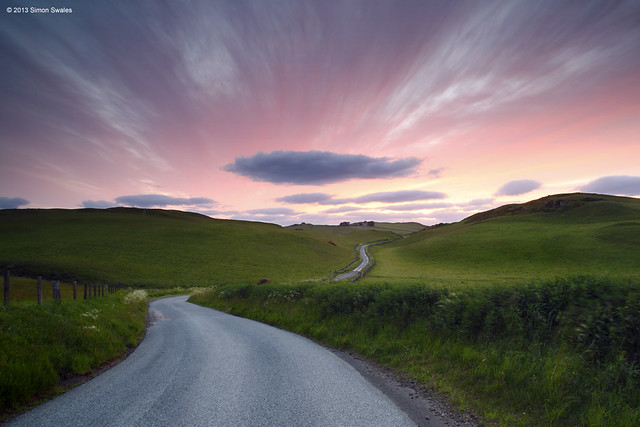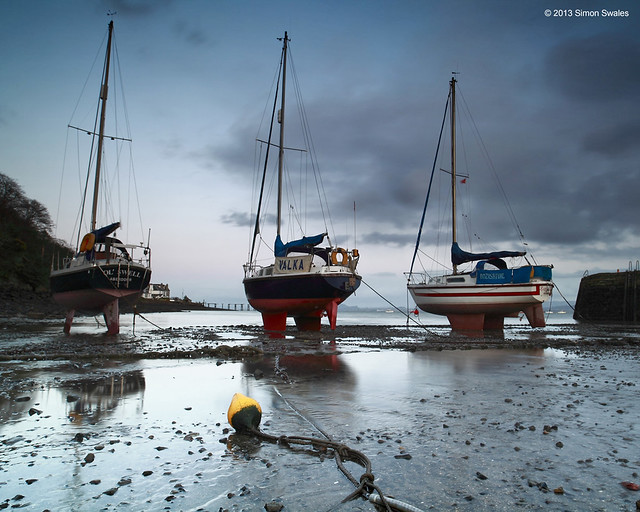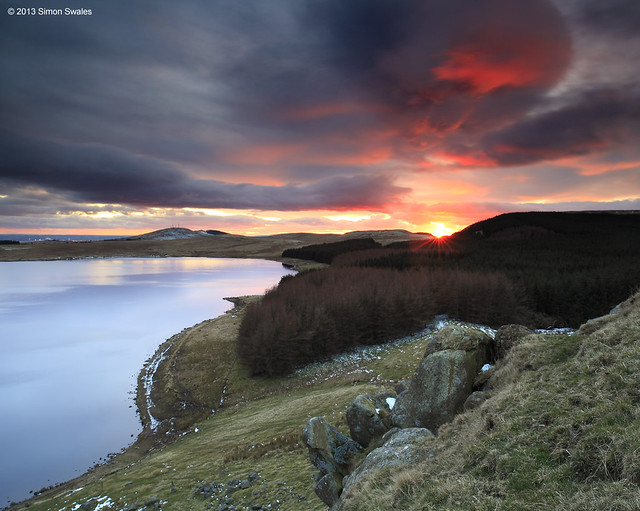4:30 a.m. and the radio alarm sprung to life. It was a bit of a shock but the previous evenings weather forecast had said that it was to be a clear night over the western Highlands followed by a sunny day so I had decided to get up early, drive, see the sunrise, do some exploring, maybe even climb a mountain and catch the sunset before heading home. With the autumn equinox being little over a week ago, daylight lasts just under 12 hours. I had packed a rucksack and camera gear the previous evening.
5:10 a.m. Reversed out of the drive, engaged 1st gear and headed for the Trossachs. With sunrise due at 7:20 a.m. I had 2 hours to get to Rannoch Moor, 80 miles away.
6:00 a.m. Tesco Express opens in Callander. I would usually stop, but not today. Headed west through the Pass of Leny and then north beside Loch Lubnaig leaving the Trossachs behind. The sky to the east was turning dark blue. Next was Strathyre then Lochearnhead before the climb up through Glen Ogle. The profile of the Tarmachan Ridge above Glen Lochay was visible by dawns early light on the decent into the forested Glen Dochart before heading west again for Crianlarich. All the time the sky was coming out of night.
6:45 a.m. and I was through Crianlarich and 10 minutes later was past the Green Welly Stop in Tyndrum. By now I could see the change in the sky as the colours of the sunrise approached so decided I had to stop somewhere or I would miss all the action.
7 a.m. Pulled over at the start of a forest road which gave a view down Gleann Ach'-innis Chailean with Beinn Dorain and Beinn a' Chaisteil flanking. Got my camera set up on the roadside just as the fiery reds of the sunrise lit the sky above the mountains creating a dramatic scene.
7:15 a.m. It was now daytime as I continued north crossing the bridge over the R. Tulla and onto Rannoch Moor stopping at the car park just after the big hairpin bend. The rising sun was back-lighting the clouds that were hugging the rim of the Wall of Rannoch (a line of 3 Munros that mark its southern edge).
7:40 a.m. Another very short drive before stopping again north of Lochan na h'Achlaise. The sun had risen high enough to spill its light over The Black Mount on the western edge of Rannoch Moor.
8:10 a.m. The sun was higher now as I continued north towards Glen Etive with Buachaille Etive Mor standing as if proud of its station at the head of Glen's Etive and Coe. Its summit was shrouded in cloud. I turned onto the minor road into Glen Etive and on reaching the bridge over the River Etive decided it was still too busy with photographers eying up Buachaille Etive Mor so continued along the road before pulling over and heading down to the River Etive where I had the river bank to myself.
9:30 a.m. Returned to the bridge over the River Etive where by now there were only a handful of people so I took up station to get the obligatory Buachaille Etive Mor shot which took an hour as I had to wait for the sun to reappear through some banks of cloud.
10:45 a.m. Re-joined the main A82 road and drove around Buachaille Etive Mor and down into Glen Coe which was mobbed with tourists. All the car parks were overflowing as was the big lay-by at Alltnafeadh so I returned to Glen Etive, going right down the glen this time before parking up at a clearing near Invercharnan.
1:00 p.m. Brewed some coffee and chilled out for a couple of hours.
3:00 p.m. Back to it with a short drive along to the 'Shed of Etive' which has a bicycle chained to the door. The shed is deteriorating due to winter storms but the weathered wood, pitched roof and bicycle are very photogenic. Eventually it might disappear completely to be replaced by something new. I hope not. It just needs a bit of TLC. In a very rough and boggy clearing on the opposite side of the road to the shed was a very autumnal view back along the glen.
4:00 p.m. Started heading back up the glen towards Glen Coe. On the way down I had seen some rowan trees on the far bank of the river near one of only two bridges I know about that cross the river. Both are private. The bridge near Coileitir can take 4WD vehicles and the other at Alltchaorunn has a gate across it that is usually padlocked. But not today as I saw someone crossing it. So I parked up and used the bridge to get to the rowan trees which were covered in berries.
5:15 p.m. Reached the A82 and turned west into Glen Coe. Most of the day-trippers had gone. Only a few cars were left and was able to park on the north side of the road below the Aonach Eagach. The landscape on the south side of the glen is dominated by the highest and grandest mountain in Argyll, Bidean Nam Bian [peak of the mountains] with its three imposing buttresses called The Three Sisters. It's one of the finest sights in The Highlands. The sun was getting low casting shadows so climbed above the road to a vantage point higher up to admire the view.
6:40 p.m. It was now a race against time to return to Rannoch Moor for the sunset at 7 p.m. I didn't quite make it and was kicking myself for spending too long in Glen Coe. I didn't have to kick myself too hard though as I found a great location about 10 minutes walk from the car to photograph as the gloaming light was fading.
7:30 p.m. The sky was heading for complete darkness as I switched the car lights on and headed south, homeward bound, after a great day.
________
Satellite map showing Rannoch Moor, Glen Etive and Glen Coe is given below

